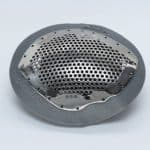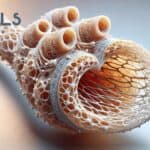Hui Jenny Chen, MD and Michelle Gabriel, MS, MBA
(This blog is adapted from our A Roadmap from Idea to Implementation: 3D Printing for Pre-Surgical Application: Operational Management for 3D Printing in Surgery)
Printer/material selection:
For comprehensive lists of printing process/printers and materials used for healthcare 3D printing, the readers can refer to our book or return to see an updated list later this month.
1. Printers:
Key performance characteristics in selecting printers include the followings [36]:
– Speed
– Resolution
– Autonomous operations
– Ease of Use
– Reliability
– Repeatability
– Material/Multi-material capability
Of this list, speed is the most important issue for pre-surgical use since the need for the model may be urgent but printing usually takes hours and sometimes days. Improvement methods vary by process and include changing the printer head movement from a Cartesian to a Delta configuration (which allows for shorter paths from one point to another), optimizing the movements of laser, and using higher quality components. The multi-material and multi-head capabilities are also of particular interest. For example, models of the heart with color-coded parts such as veins, arteries, etc. can be made faster if the sections are not made piecemeal. Models for surgical practice often require materials with different haptic properties and would be made much faster if, once again, the complete model could be made at once and not in a piecemeal fashion.
2. Materials:
There are only a handful of 3D printing materials that are biocompatible and can be readily sterilized. [47] A variety of materials with different strength, elasticity, color/transparency will provide additional benefits for pre-surgical 3D prints. In addition to added materials, new sterilization techniques that do not require high temperature or toxic chemicals, and techniques that require less time will all prove useful in the future.
Currently, different 3D printer manufacturers also produce 3D printing materials presumably optimal for their printers. Therefore, the ultimate purchase decision should start with the current and potential future applications for which the printers are intended.
Three questions need to be answered:
1) Primary applications of the 3D printing — the requirements in terms of resolution, color, and texture of a model for conceptual purpose or device prototyping are significantly less than a model intended for hands-on practice before a complicated surgery. If the model were to be extensively used in close proximity to the surgeon intra-operatively, then selecting a system that avails more options in sterilizable material selection would be important.
2) Size of the print — this could be related to the specialty for which the setup is intended. For example, the print size capability of a system dedicated for craniofacial reconstruction will be very different from a system dedicated to Orthopedics. A printing system shared among different specialties will require a large enough platform for everyone, and therefore, it will be more expensive.
3) Other future healthcare-related 3D printing activities — other than pre-surgical applications, there are a variety of existing and future healthcare applications, from medical training, rapid prototyping, research, to patient-specific implantable devices. If one was to invest in a 3D printing system, calculations for potential future revenue stream may be necessary during the selection process. A 5- to 10-year revenue strategy may be necessary. We will elaborate more on this in the financial section.
Software selection:
1. The cost to use — open vs. commercial software.
“Free” may not be “cheap”. The cost of using free open source software includes lack of documentation or instruction, lack of technical support in case of dysfunction, lack of continuous development or updates. Although this is a viable option for users with a small 3D printing budget and technological savvy, be prepared to invest a great deal of time at the beginning to learn to use the software. Lack of time is often prohibitive for busy clinicians to learn the software themselves. Commercial software like Mimic (Materialise, Belgium) has very expensive annual licensing, discouraging many who only want to experiment with 3D printing. Nonetheless, these commercial options have more intuitive designs and great technical support and often offer personalized education/instruction time for users to fully grasp 3D printing within a very short period of time.
2. Future trend — automation and streamlined workflow.
Segmentation is the most time-consuming step of DICOM to STL conversion. Anecdotally, one radiologist can spend up to 13 hours to segment a complex heart model. Others have spent less time but still often in hours of magnitude. Automated segmentation will be a significant future development in the software area and will prove to be extremely valuable for cost-saving improvements. Additionally, more streamlined workflow from imaging acquisition to 3D prints from a software perspective is also what many users are hoping for. According to recent interviews with field experts, many larger PACS vendors are now developing DICOM to STL conversion capability with their newer software versions. Segmentation tools are also included in these newer versions. Many existing 3D printing companies are also actively developing products that are more user-friendly especially to the healthcare industry. Examples of these include Autodesk (CA, USA), and 3D System (NC, USA).
Idea to Implementation: In House Cost Consideration for 3D Printing for Surgical Applications Part 1




 Jan 26, 2017
Jan 26, 2017 






Comments